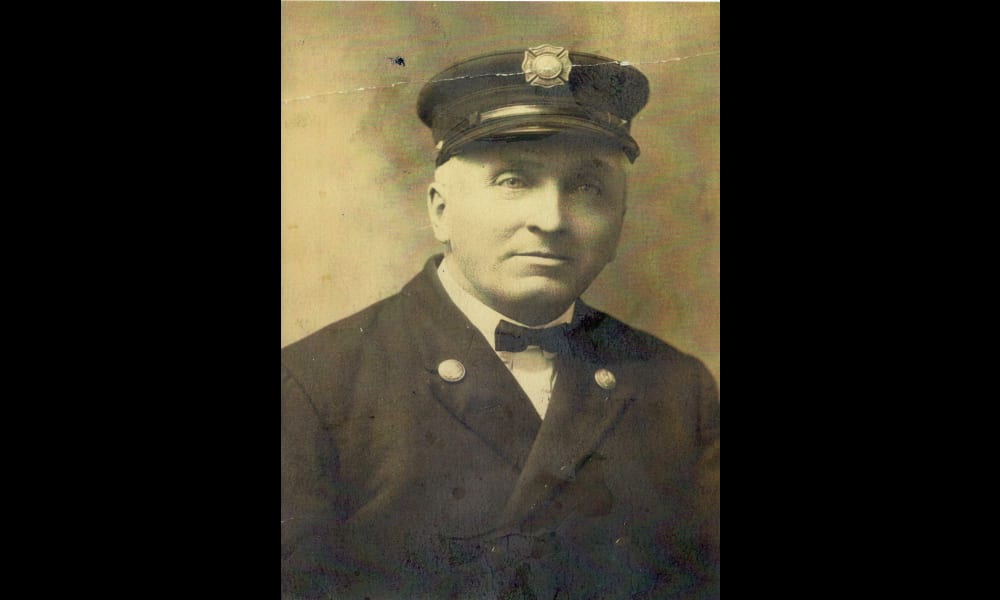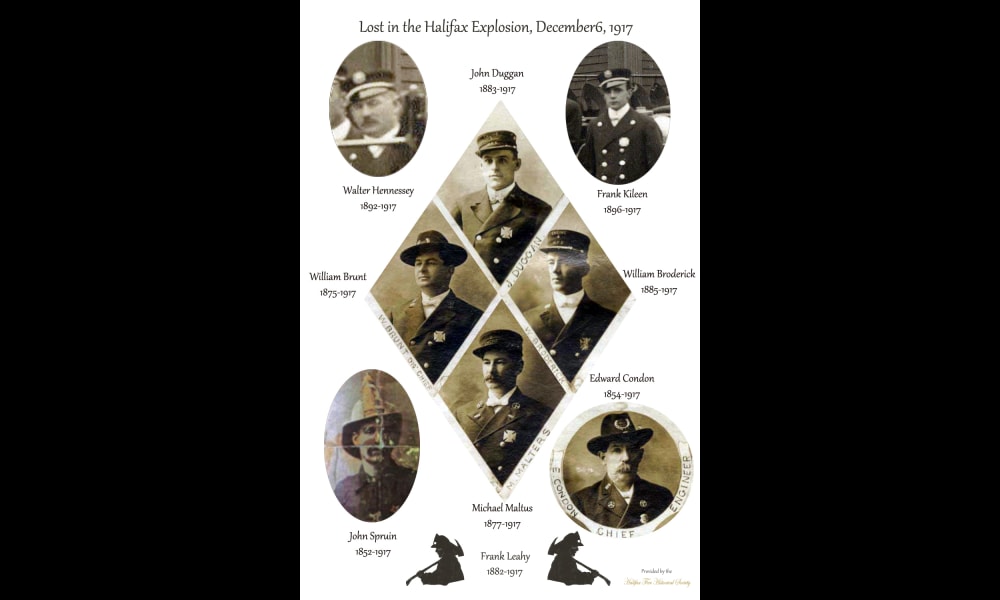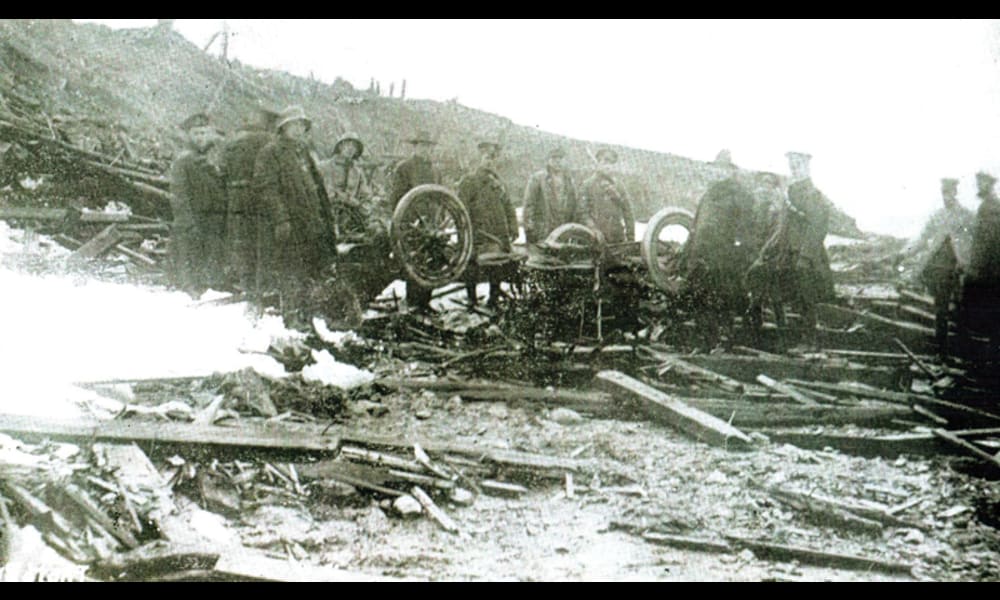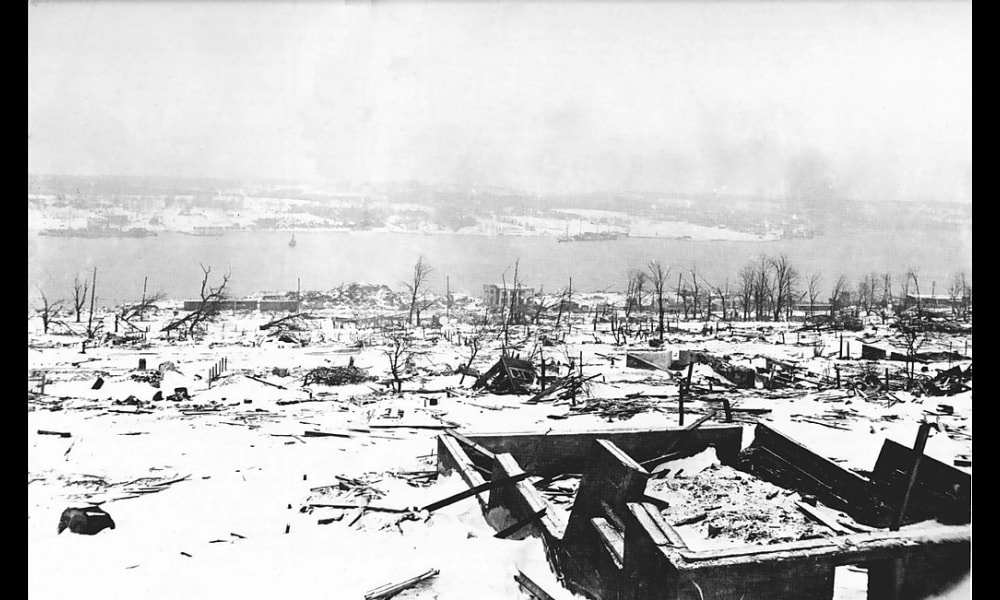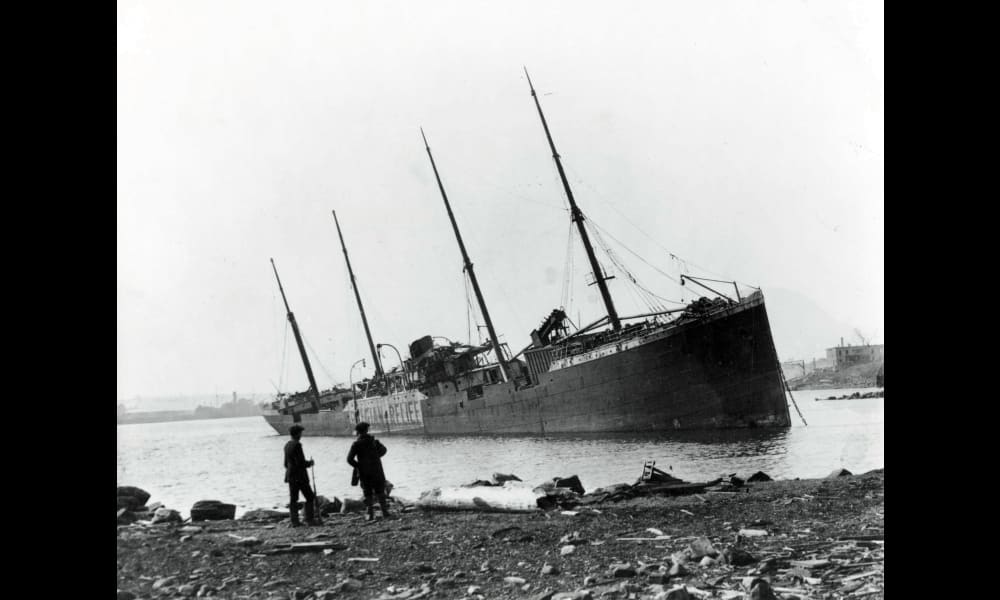The Morning of The Explosion
Firemen were among the first to respond to the disaster, rushing to the Mont-Blanc to attempt to extinguish the blaze before the explosion even occurred. They also played an instrumental role in regaining control of the devastated city after the blast, with members arriving to assist from across Halifax, and by the end of the day from as far away as Springhill and Amherst Nova Scotia, and, Moncton New Brunswick, via relief trains.
Halifax Fire Department at the time was comprised 8 Fire Stations 122 members (36 of whom were fully employed), 13 apparatus (1 of which was motorized), and roughly 30 horses. West Street's Station 2 was the first to arrive at pier 6 with the crew of the American LaFrance built Patricia, the first motorized fire engine in Canada.
They were responding to Box 83, the dockyard alarm at the corner of Roome Street and Campbell Road (now Barrington Street), as Mont-Blanc drew near to its resting place at Pier 6.
Although the dockyard alarms were routine for the department, today was different, as North End general storekeeper Constant Upham could see the serious nature of the fire from his home and called surrounding fire stations to advise them. Upham's store was on Campbell Road, directly in view of the burning ship, and as one of the few buildings at the time with a phone, he placed his call sometime after 8:45 that morning. Despite this warning, none of the firemen knew that the ship carried munitions. It was believed however, that the vessel's crew was still onboard, as West Street's Station 2, Brunswick Street's Station 1, Gottingen Street, and Quinpool Road's Station 5 responded to Upham's call.
Fire Chief Edward P. Condon and Deputy Chief William P. Brunt, were next on the scene, arriving from Brunswick Street in the department's 1911 McLaughlin Roadster. The heat was overwhelming, and Chief Condon pulled the Box 83 alarm again. The Motor Vehicle containing Condon and Brunt was sent up in the air, completely turned around. Condon and Brunt were instantly killed.
In the final moments before the explosion, hoses were being unrolled as the fire spread to the docks. Retired Hoseman John Spruin Sr. was on his way from Brunswick Street in a horse-drawn pumper, and Hoseman John H. E. Duggan was traveling from Isleville Street's Station 7 with another horse-drawn firefighting wagon.
None of the firemen knew the danger that they faced as 9:04 arrived, bringing about the explosion that obliterated the dockyard fire site. Fire Chief Edward Condon and Deputy Chief William Brunt were killed immediately along with crew members, Captain William T. Broderick, Captain G. Michael Maltus, Hoseman Walter Hennessey, and Hoseman Frank Killeen, of the Patricia. John Spruin and John Duggan were both struck and killed by shrapnel en route to the fire. Their horses were also killed instantly in the blast. Patricia hoseman Frank D. Leahy died on December 31, 1917 from his injuries. Nine members of the Halifax Fire Department lost their lives performing their duty that day.
Billy Wells Story
The only surviving member at the scene was Patricia driver Billy (William)
Wells, who was in the vehicle at the time of the blast. He recounts the event for the Mail Star October 6, 1967, "That's when it happened ... The first thing I remember after the explosion was standing quite a distance from the fire engine ... The force of the explosion had blown off all my clothes as well as the muscles from my right arm..."
It is explained that Billy was standing again as the tidal wave came over him. He managed to remain on land.
...After the wave had receded I didn't see anything of the other firemen so made my way to the old magazine on Campbell Road ... The sight was awful ... with people hanging out of windows dead. Some with their heads off, and some thrown onto the overhead telegraph wires ... I was taken to Camp Hill Hospital and lay on the floor for two days waiting for a bed.
The doctors and nurses certainly gave me great service"
Notably, firefighter Albert Brunt also survived the blast, by chance, as he slipped while attempting to jump onto the Patricia as it rounded a corner on its way to the docks.
A new pumper was purchased by the city and arrived just a few days after the explosion. The Patricia was later restored by the American LaFrance company for $6,000.00, who donated $1,500.00 to a fund for the families of the firemen. The families of firemen killed in the blast received $1,000 from the city (close to $15,000.00 in 2007 dollars), with the exception of one, who received $500.00.
On the 75th anniversary of the Halifax Explosion, December 6, 1992, the Halifax Fire Department erected a monument at the current Station 4, at the corner of Lady Hammond Road and Robie Street, in honor of the fallen members who died fighting the fire on Mont-Blanc.
Members Lost because of the Explosion
Chief Edward P. Condon was 60 years old and married at the time of his death; he lived at 117 Dresden Row. He was a full-time fire chief with the Halifax Fire Department. His death certificates lists the cause of death as: "Shock due to injuries from explosion".
Deputy Fire Chief William Brunt lived on Creighton Street, at number 123. He was 41 years old and married when he died. He was a full-time deputy fire chief with the Halifax Fire Department. The cause of death was listed as: "Shock due to injuries from explosion".
Captain William Broderick was a full-time captain with the Halifax Fire Department, and lived on Queen Street in Halifax, at number 152. He was 32 years old and single. On his death record, the cause of death is labeled as "Shock due to injuries from explosion".
Captain Michael Maltus replaced a firefighter that was sick with the flu and refused to go on the call even after being threatened with disciplinary action. His death certificate lists the cause of death as: "Shock due to injuries from explosion".
Hoseman Frank Leahy survived the blast but he later died on December 31, 1917, from his injuries. The cause of death was listed as: "Shock due to injuries from explosion, compound fractures and pneumonia".
Volunteer Hoseman Frank Hennessey was 25 years old and lived at 16 Cunard Street. He was married to 23 year old Honora McMillan, who was from Sydney, NS. The cause of death was listed as: "Shock due to injuries from explosion". His death certificate lists his occupation as an office clerk. He is burried at Mount Olivet Cemetery, in Halifax.
Hoseman Frank Kileen was 21 years old, and was married. He lived at 161 Hollis Street. The cause of death was listed as: "Shock due to injuries from explosion".
Hoseman John Duggan was 34 years old, and was married. He lived at 130 Creighton Street. The cause of death was listed as: "Shock due to injuries from explosion". His death certificate lists his occupation as stevedore (loading/unloading ships).
John Spruin was a veteran member of the Halifax Fire Department who was not liable for duty except in the event of a special call. When he saw the horse drawn engine pass on its way to the call, the old habit re-asserted itself and he sprang to the running board to do his part. One report has it that the wagon Spruin was riding in made a sudden lurch and he was flung to the ground and killed instantly.


